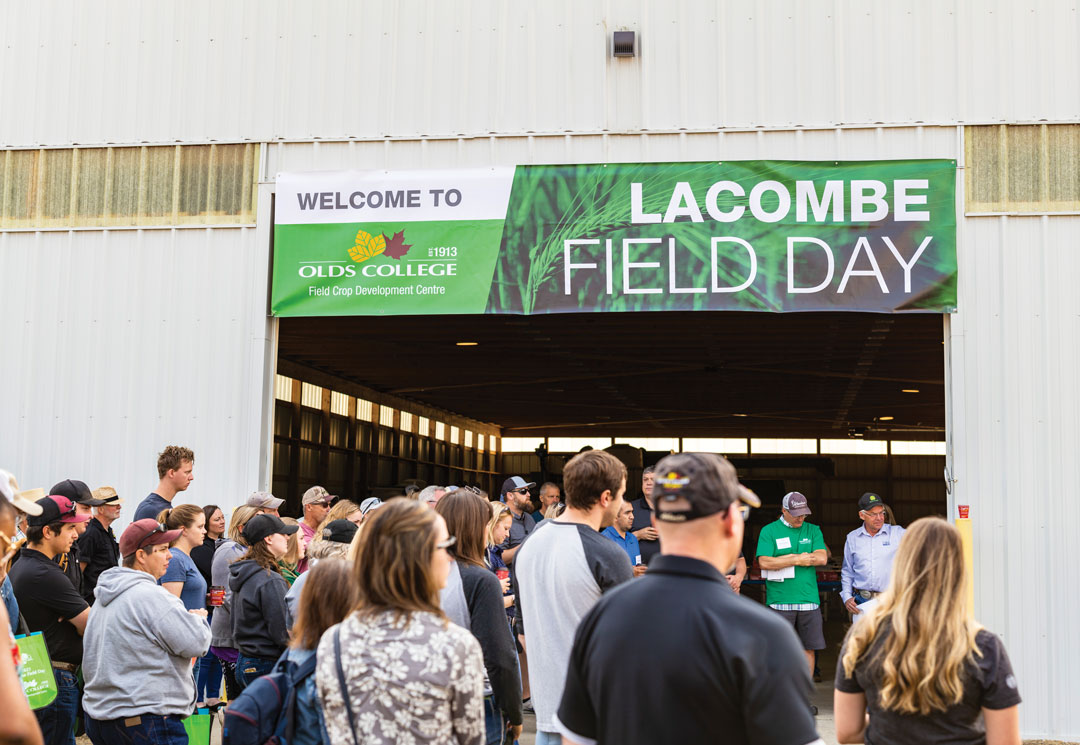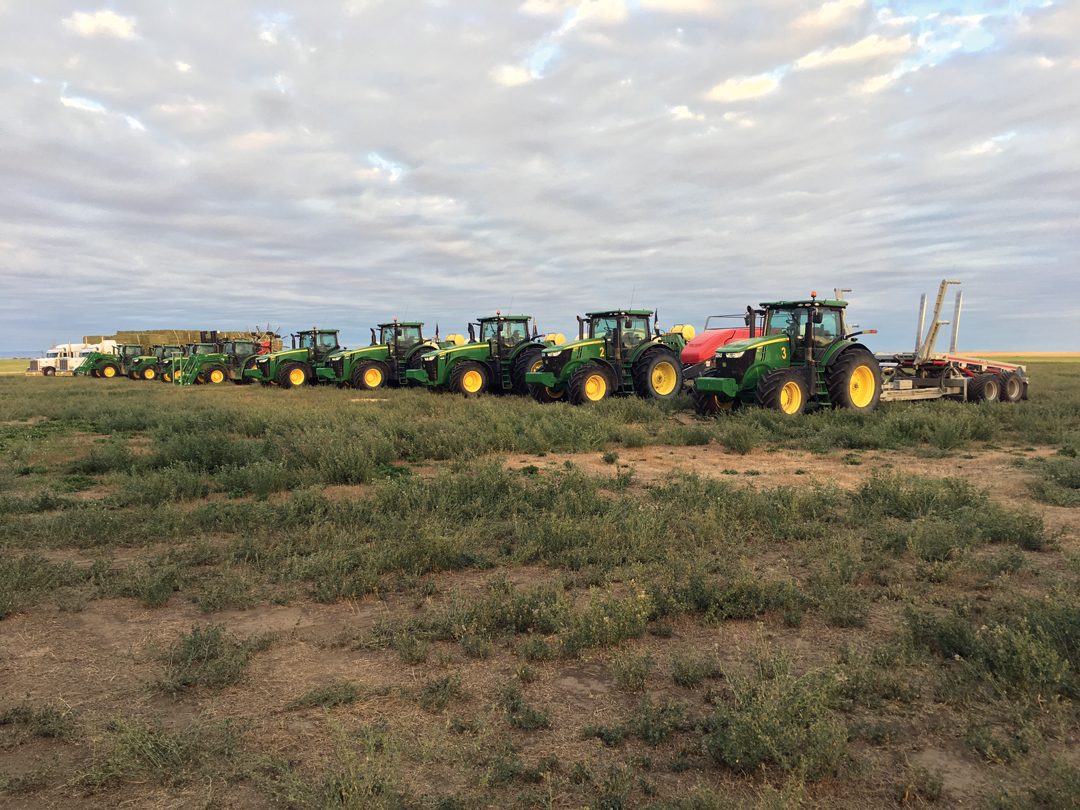PRACTICAL CROP BREEDING
BY MADELEINE BAERG • PHOTO BY NICHOLE MURRAY PHOTOGRAPHY
When Olds College assumed management of the Field Crop Development Centre (FCDC) from Alberta Agriculture, Forestry and Rural Economic Development this past January, management and staff jumped into action. The College took on the support of FCDC breeding programs and amalgamated those employees into its own team. Over the course of just nine months, the College also developed a new strategic direction for the venerated crop breeding institution. In September, its board of governors approved the draft plan for the new strategy. Over the coming months, the College will develop a rolling three-year business plan that will put the new guidelines into action.
As this new strategy is put into practice over the coming months, college administrators say FCDC will become a more outward, industry-oriented operation. “We understand and appreciate the important work that’s been done [by FCDC] over the past five decades, but we also recognize the Centre must evolve to better respond to the needs of industry,” said Patrick Machacek, Olds College vice-president of development and strategy. “We need to be externally facing with a measurable impact on the sector.”
Olds College recently recruited Paul Thiel, former Bayer CropScience VP of product development and regulatory science, to the role of thought leader in smart agriculture.
To tailor the plan’s focus to the practical needs of the industry, he was named lead of the FCDC steering committee, which is composed of diverse stakeholders from various agriculture organizations. For additional input on challenges and potential opportunities, Thiel has also conducted in-depth interviews with more than 40 industry leaders.
Operations will now focus on being responsive to industry needs in two ways. First, FCDC will better collaborate with industry to ensure its breeding program aligns with the needs of the marketplace. While it will be critical to the continued viability of the agriculture sector to maintain long-term trait breeding efforts, the Centre’s applied efforts in the short term will focus on industry priorities, said Machacek.
“We do want varieties that come out of FCDC to be actively utilized by producers across Canada, especially Western Canada,” he said. “That’s a really key measure we have to hang our hat on. If that’s not happening, and in many cases, it’s probably not happening enough, we need to figure out different tactics to ensure utilization.
“Our goal is to get those profiles and attributes that are needed in the marketplace into the varieties we’re producing. The only way we’re going to do that is to get ourselves out there listening and connecting [with farmers and industry].”
The second prong of its action plan, Olds College will actively engage additional FCDC funders as it is now reliant on the provincial government, through Results Driven Agriculture Research (RDAR), as its primary source of funding. While provincial funding remains critical, the new strategic plan envisions a framework where non-profit, private sector and government organizations see the Centre’s value and provide financial support.
“We’re trying to create a diversified funding framework that is sustainable,” said Machacek. “We’ve learned at Olds College that when we create a dynamic value proposition, we’ve been able to grow investments. It’s not that we’re encouraging less investment by government, it’s that we think there’s opportunity to diversify and grow the opportunities inside the sector.
“We believe we have a successful plan thanks to the support we’ve received from [Alberta Ag] and hopefully with continued support through RDAR. They understand the value proposition and the importance of continuing this breeding program and what we’re aiming to achieve for producers and industry partners.”







Comments